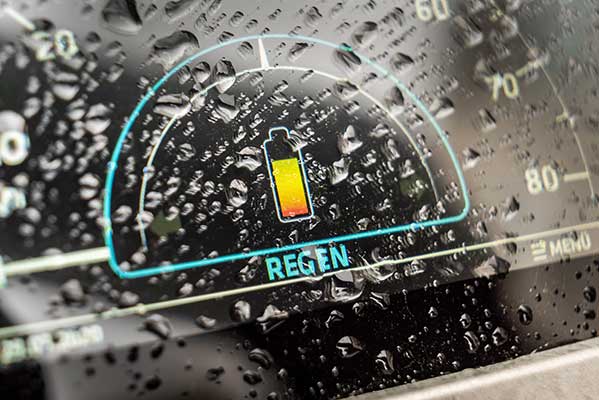With the growth of electric vehicles, auto companies have many considerations when determining the origin of various EV battery materials.

By Peter Maithel, Automotive Industry Principal for Infor
The growth of electric vehicles is driving massive investments in battery production around the world. Incentivized by recent U.S. government legislation, North America has become an increasingly attractive location for battery plants. In 2022 alone, companies announced more than $73 billion in planned projects — more than three times the previous record, set in 2021.
Recent announcements include GM’s $3 billion investment in a new battery cell plant in partnership with Korea’s Samsung SDI; Hyundai’s $5 billion battery cell joint venture in Georgia with SK On; and Volkswagen’s joint $14.8 billion gigafactory investment with the Canadian government. In fact, just in the U.S. alone, there are 13 new battery cell gigafactories scheduled to come online by 2025, according to the U.S. Department of Energy.
Producing the amount of batteries forecast by these projects and more will require vast amounts of minerals such as lithium, cobalt, magnesium and nickel — delivered via a widely dispersed global supply chain. Many of these minerals are extracted in one country, processed in another, then shipped to a third, where they are turned into cells and batteries. In several cases, this intricate global network includes countries with questionable political and/or labor practices, such as child or forced labor. Furthermore, because the supply of some of these critical minerals is controlled by countries that are ‘unfriendly’ to American interests, the aforementioned U.S. legislationprovides significant financial incentives for EV battery manufacturers to do business with countries whose commercial and political views align more closely with those of the U.S. and its allies.
To address these concerns, the Global Battery Alliance, in partnership with the World Economic Forum proposed the concept of a ‘battery passport’ (‘The Global Battery Alliance Battery Passport: Giving an identity to the EV’s most important component’ – Briefing Paper, November 2020) to capture details on the provenance of a battery and its components, as well as lifecycle (usage) data. In essence, a battery passport is a digital twin of a physical battery and is key to driving ethical sourcing, safe recycling and ultimately, lowering emissions and establishing a circular and sustainable battery economy.

While laudable, the achievement of these goals poses some significant challenges. Because of the complexity of the battery supply chain, it is not a simple matter to determine the origin of the various materials comprising an EV battery, especially as one drills down from the finished product to the raw minerals. For example, how does one obtain data on minerals that originate in underdeveloped countries, which may lack a modern technology infrastructure? Other key impediments include: maintaining reliable connectivity between the digital twin and the physical battery in varying usage conditions; the lack of standardized global data capture and reporting methods; inconsistent cooperation and communication between all involved parties; financial considerations; and geopolitical differences, to name a few.
In addition to tracking battery origin and usage (including second life applications such as off-grid power storage), a battery passport should also capture recycling and disposal data in order to provide complete traceability from ‘cradle to grave.’ While it can be argued that data capture at end of life may be easier because one is working with individually-serialized objects as opposed to raw bulk minerals, that does not address the significant challenges around battery recycling. For example, whose responsibility is it to ensure proper disposal of an EV battery? Is the vehicle owner responsible/liable? Or is it the vehicle or battery manufacturer? Additionally, there are several major hurdles to recycling. While a detailed discussion of this topic is beyond the scope of this article, among them are: the high cost to transport batteries to recycling facilities; a lack of feedstock (which leads to significant underutilization of recycling plants); costs of the various recycling techniques which are also energy intensive and hazardous; varying battery chemistries requiring different recycling methods; battery designs which are not optimized for recycling; and the evolution of battery chemistry, which could render a recycling plant obsolete, to name a few. These and other factors make recycled materials more expensive than virgin materials, further impacting the economic viability of – and hence, ability to attract investment to – EV battery recycling.
The uncertainty and constant, rapid change in the EV battery arena underscore the following key takeaways:
While there are many issues still to be resolved, and much understandable angst as a result, auto companies that act quickly, decisively and strategically can gain significant competitive advantage during this historic inflexion point in the industry.

About the Author:
Peter has extensive automotive sector experience in various leadership roles with Deloitte, Ernst & Young, Accenture and Cognizant, and has delivered global technology-enabled business solutions to OEMs and tiered suppliers including General Motors, Ford, Stellantis, Volkswagen, Trelleborg and Continental, among several others. As the Industry Principal for the Automotive Sector at Infor, Peter is responsible for the automotive industry strategy which includes the alignment of Infor’s solutions with the voice of the customer and overall industry trends. He frequently speaks and publishes on various industry-specific topics, and he also happens to be an avid car enthusiast.
From tradition to transformation Sequoia Brass & Copper has stood for excellence in American manufacturing. In this episode, we sit down with Kim MacFarlane, President of Sequoia Brass & Copper, to hear the inspiring story of a family-owned company founded by her father, built on craftsmanship, trust, and a relentless commitment to quality. Kim shares how she’s guided the company through the challenges of modern industry while honoring its heritage, and how the next chapter will be carried forward by her son Kyle. This is more than a story of brass and copper; it’s about resilience, innovation, and the enduring strength of family legacy. If you’ve ever wondered how tradition can meet the demands of today’s industry hit play and be inspired.